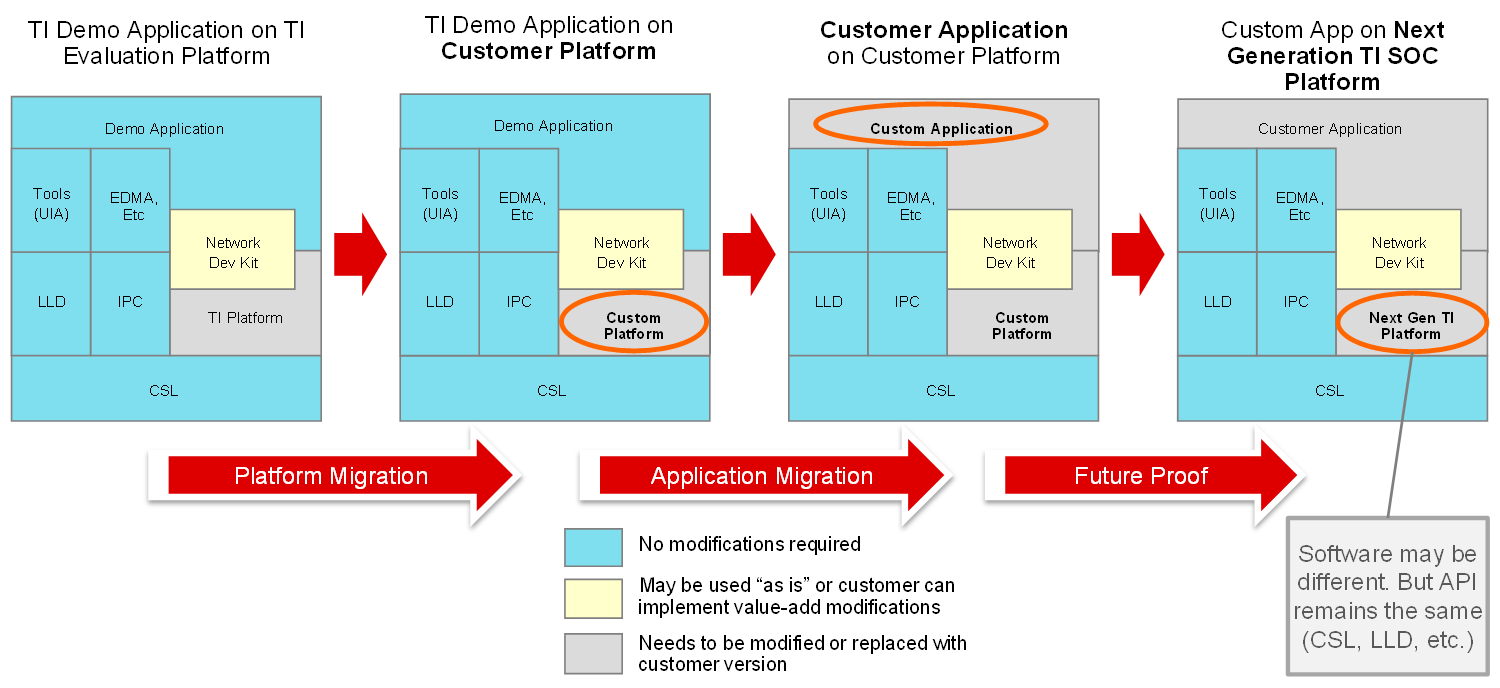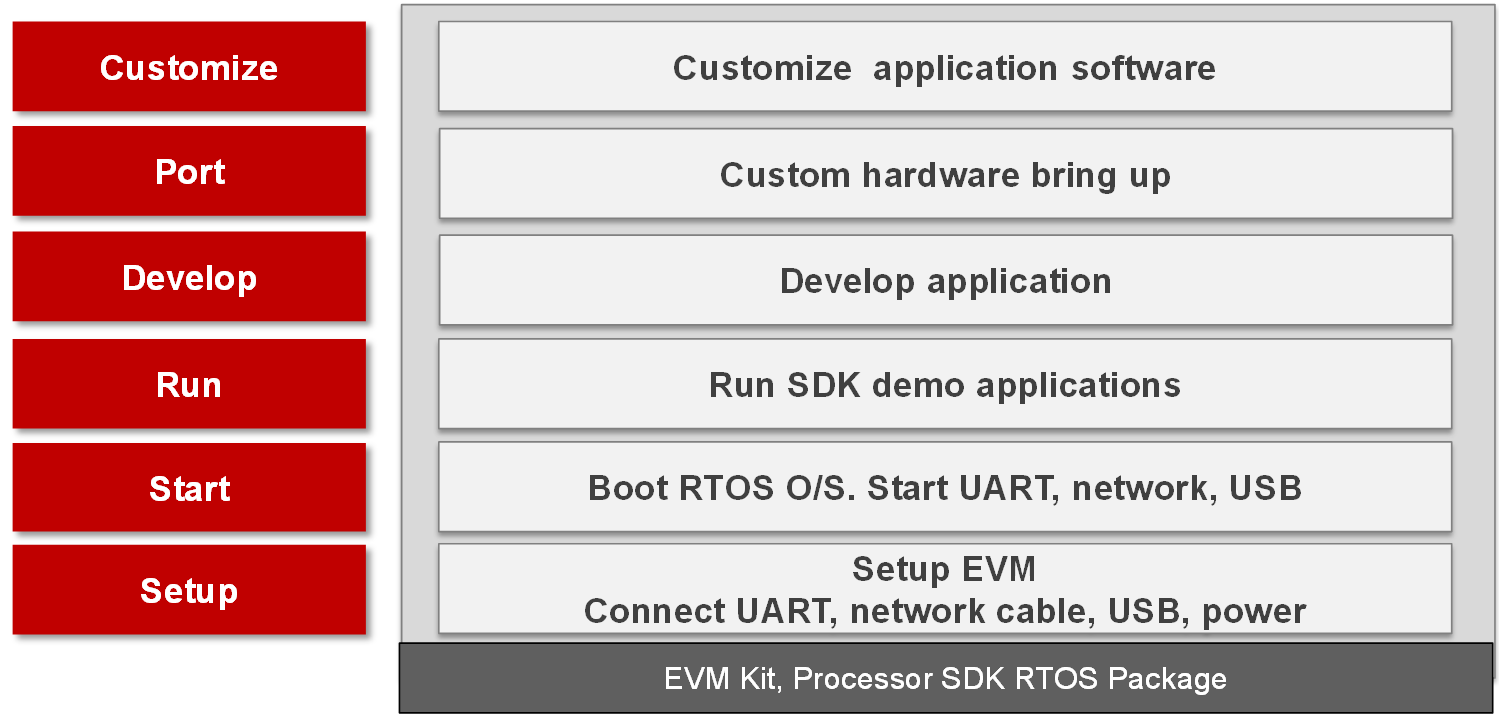SPRACR4A May 2020 – February 2021 66AK2E05 , 66AK2G12 , 66AK2H06 , 66AK2H12 , 66AK2H14 , TMS320C54CST , TMS320C54V90 , TMS320C5504 , TMS320C5505 , TMS320C5514 , TMS320C5515 , TMS320C5517 , TMS320C5532 , TMS320C5533 , TMS320C5534 , TMS320C5535 , TMS320C6201 , TMS320C6202 , TMS320C6202B , TMS320C6203B , TMS320C6204 , TMS320C6205 , TMS320C6211B , TMS320C6410 , TMS320C6411 , TMS320C6412 , TMS320C6413 , TMS320C6414 , TMS320C6414T , TMS320C6415 , TMS320C6415T , TMS320C6416 , TMS320C6416T , TMS320C6418 , TMS320C6421 , TMS320C6421Q , TMS320C6424 , TMS320C6424Q , TMS320C6452 , TMS320C6454 , TMS320C6455 , TMS320C6457 , TMS320C6472 , TMS320C6474 , TMS320C6652 , TMS320C6654 , TMS320C6655 , TMS320C6657 , TMS320C6670 , TMS320C6671 , TMS320C6672 , TMS320C6674 , TMS320C6678 , TMS320C6701 , TMS320C6711D , TMS320C6712D , TMS320C6713B , TMS320C6720 , TMS320C6722B , TMS320C6726B , TMS320C6727 , TMS320C6727B , TMS320C6742 , TMS320C6743 , TMS320C6745 , TMS320C6746 , TMS320C6747 , TMS320C6748
7 Processor SDK
For release, see the E2E thread: Sitara & DSP Announcement on Software.
The recommendation is, on the particular product page for the SDK download, click "Alert Me" to get automatic email alert when a new release comes out.
Useful SDK training material is located at: Processor SDK Training Series.
In particular, this one is useful for RTOS: 1.5 Application Development Using Processor SDK RTOS Description
Figure 7-1 shows the approach that protects software investments made by embedded developers on existing TI parts, as all software releases for future TI SoC platforms will use this software methodology. From application perspective even if the underlying SoC is different, the API interfaces to functional CSL and LLD remains the same, which allows you to reuse the application software even when the underlying software may be different. Due to this approach to software, application developer who have developed their software on one of TI`s Processors will not need to re-learn working with the TI software.
 Figure 7-1 Maximize Software
Reuse
Figure 7-1 Maximize Software
ReuseFigure 7-2 shows the typical application development flow that a software developer would go through while using Processor SDK RTOS. As you go through the presentation, this development flow provides a little more detail on the flow of the training at each of these stages.
You typically start off by purchasing an Evaluation platform on which the processor functionality has been validated and then downloading the software environment required on the host to start their development.
Once you have the evaluation module in hand, you need to follow some common hardware Setup steps in order to run the software on your evaluation platforms. Such as, setting up the development environment by hooking up an emulator, which may optionally involve hooking up cables for connectivity through universal asynchronous receiver/transmitter (UART), USB interfaces. Typically, the EVM kit comes with the Quick start guide instructions that provide steps to setup the EVM and run an out of box demonstration on the platform.
Once the hardware is setup to run the software, go though the process of setting up the host development environment and then run some simple example code to verify the EVM is functional. For instance, running hello world examples on cores, learn to run RTOS applications and check some basic functionality on the EVM like blinking LEDs using general-purpose input/output (GPIOs) and checking for UART, USB and Network connectivity on the EVM.
After checking out the basic functionality on the EVM, it is recommended to run demo applications provided in the Processor SDK. These demos integrate multiple components of SDK and highlight the device features by creating a real world system use case.
More details in application development using drivers is included in the SDK. Some key elements in the SDK are discussed that will aid you to create your own application.
The Portability aspect of your application while migrating from the TI evaluation platform to your custom application board is discussed and components of the Processor SDK are looked at that makes the software easier to port.
Finally, look at customizing your software after migrating to the custom platform and provide some pointers that will help with your system integration.
 Figure 7-2 Typical Development
Flow
Figure 7-2 Typical Development
Flow